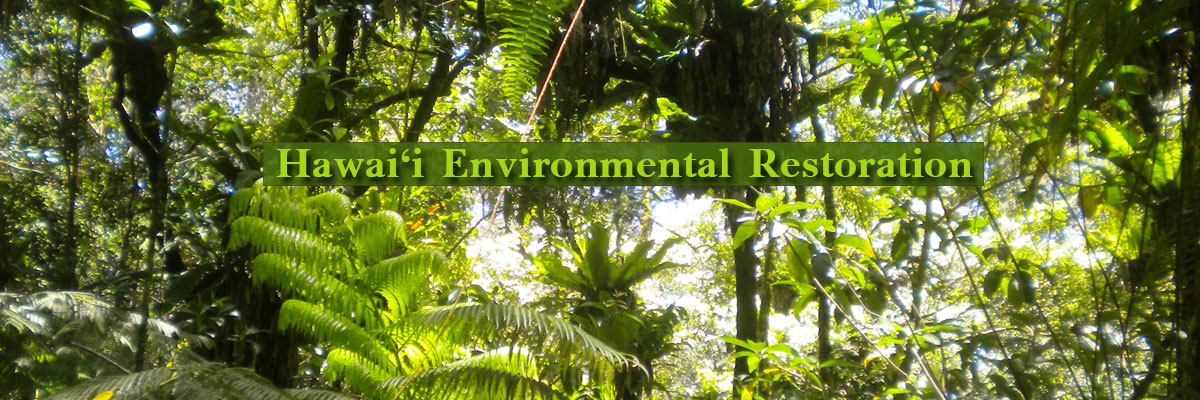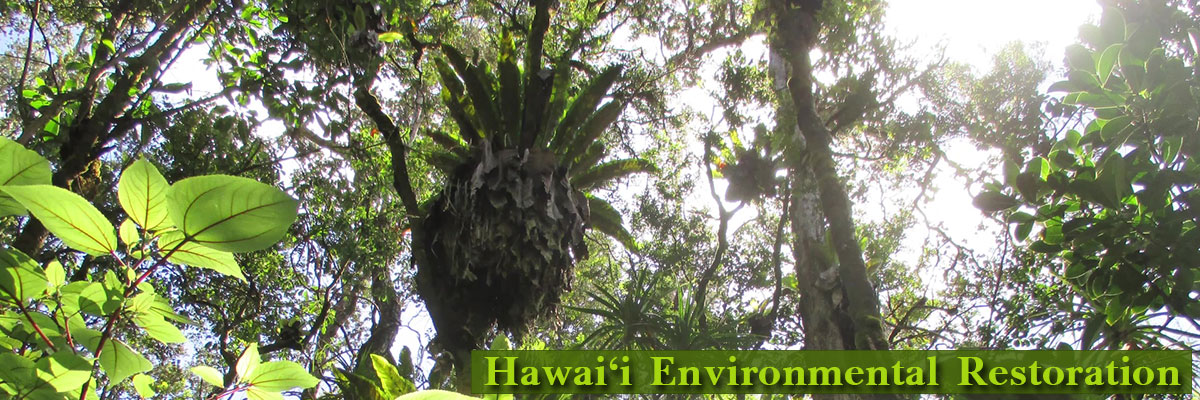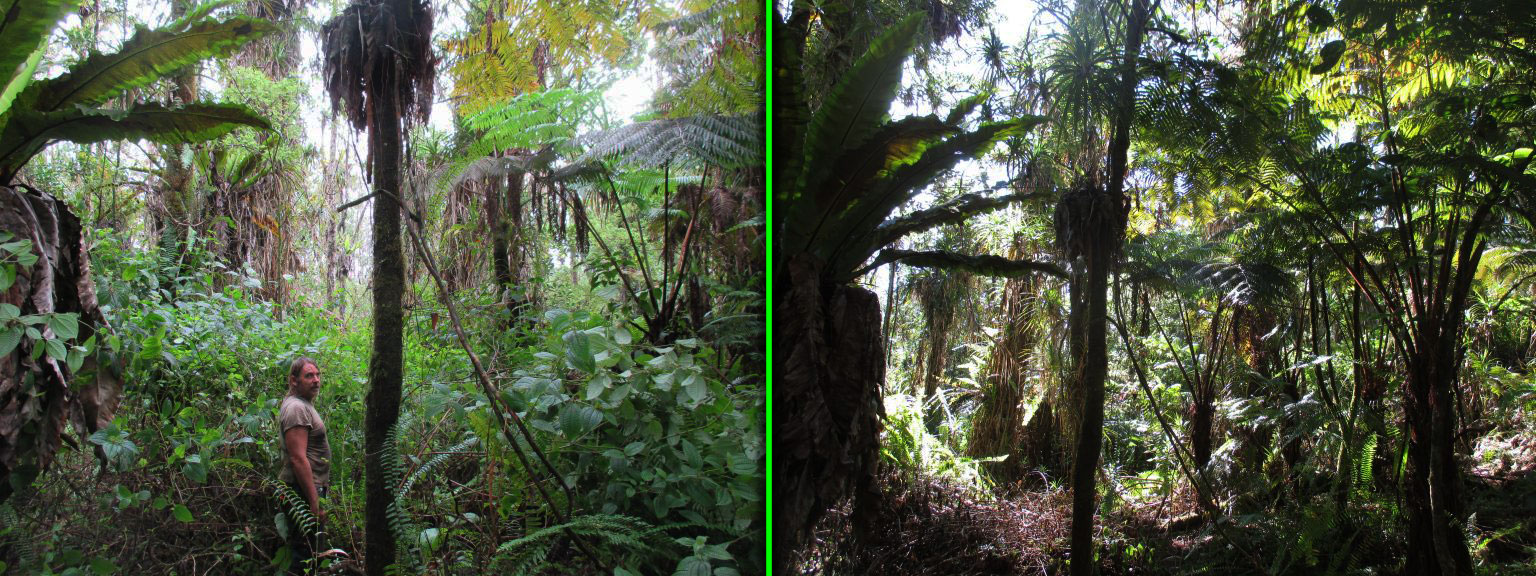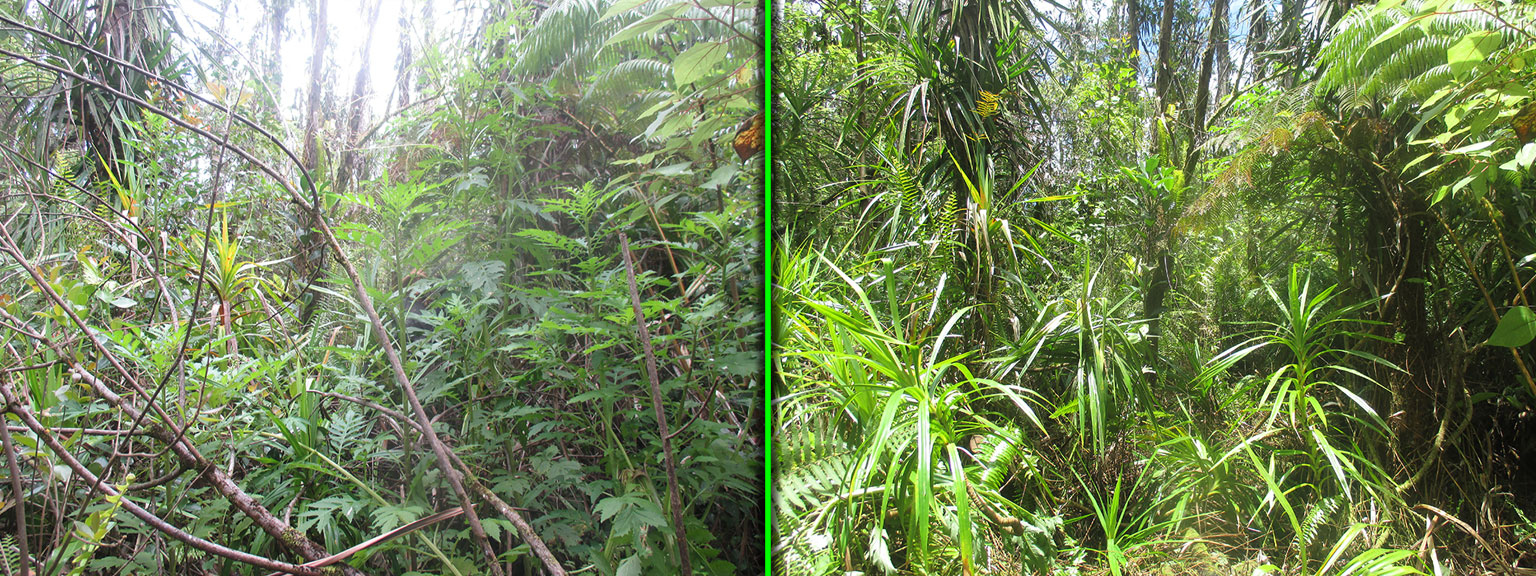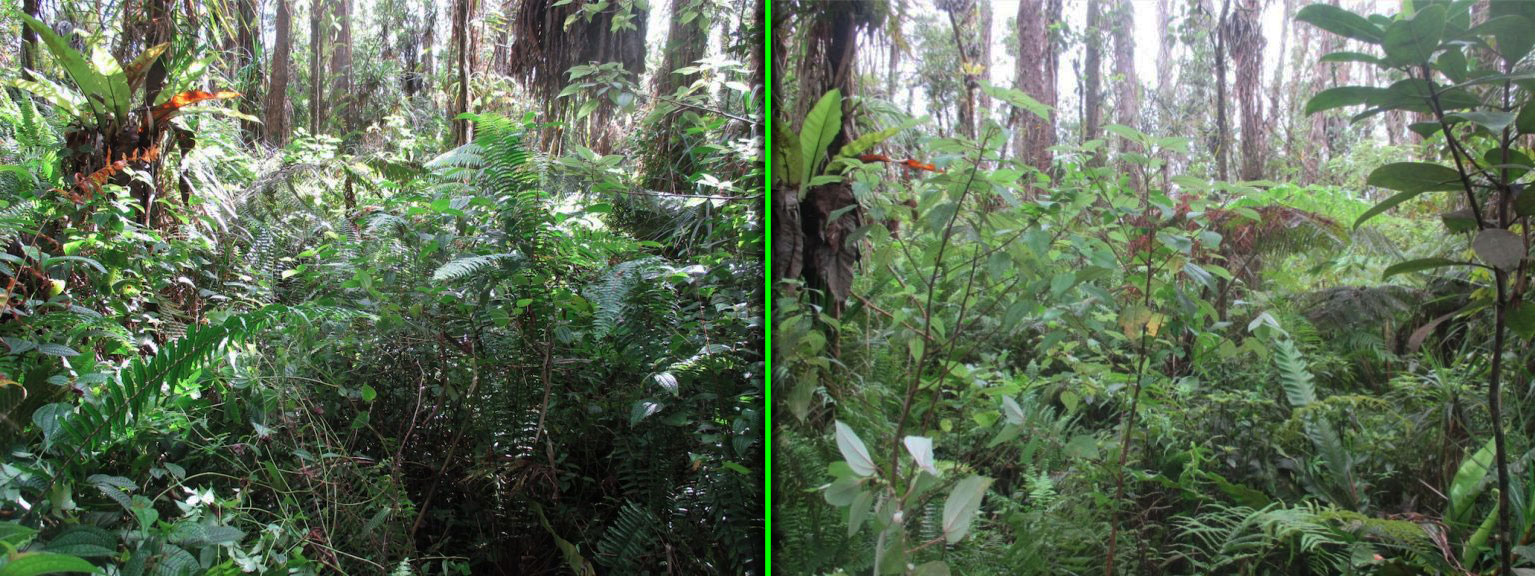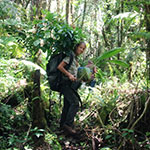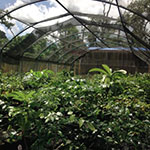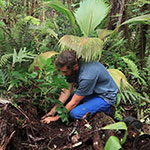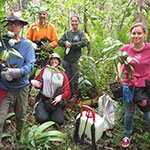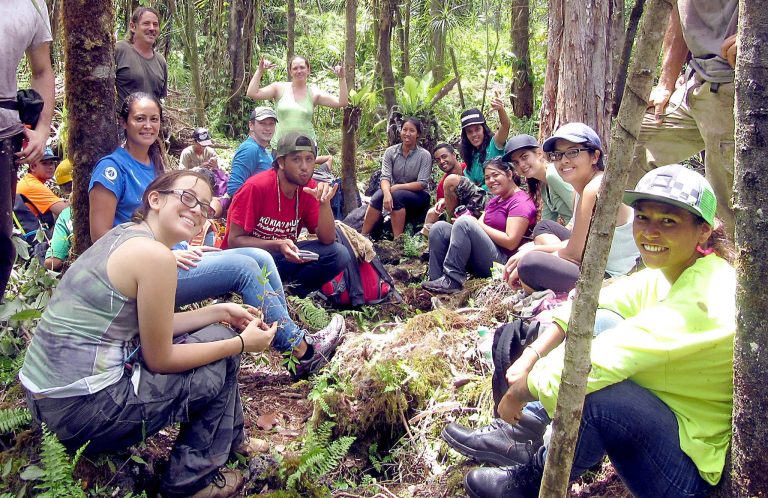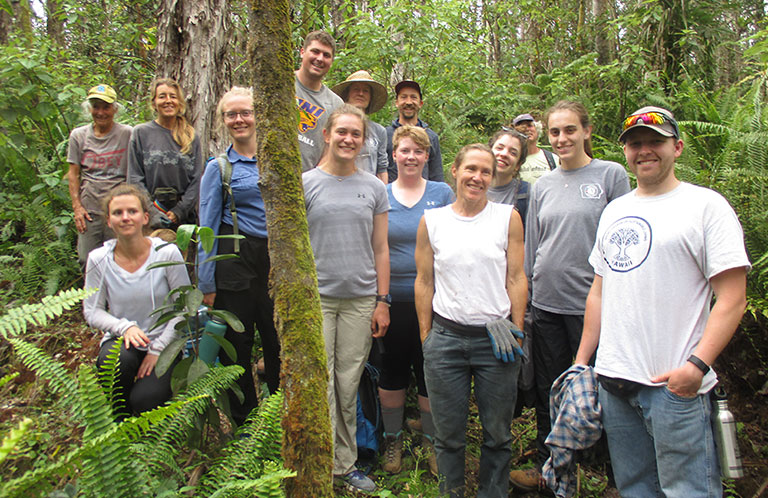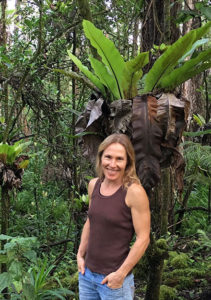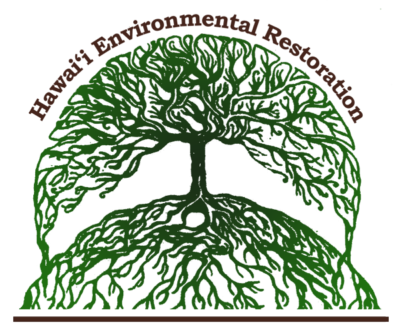
‘Ua ike i ka lani o ka ‘aina
‘E ulu i ka pai ‘aina ‘o Hawai’i
The beauty of the land be revealed,
that we may flourish upon the Hawaiian Islands.
Keau’ohana Rainforest Restoration Video
Hawai’i Environmental Restoration (HER)
Hawaiʻi Environmental Restoration’s (HER) primary project is the restoration and preservation of Keauʻohana State Forest Reserve—the largest and most intact lowland rainforest remaining below 1,000 feet in Hawaiʻi. Of the five State Forest Reserves set aside for conservation in 1903, Keauʻohana is the only Puna reserve where the original forest composition still endures. This rare native ecotype is now one of the last strongholds for many native, rare, and endangered species, making its protection critical to Hawaiʻi’s cultural and biological heritage.
Since 2014, HER has led an intensive restoration effort at Keauʻohana, combining native species outplanting, invasive species control, and community-based stewardship. Restoration cycles have evolved into a focused, high-quality effort on 20 acres of the forest’s most biodiverse lands, where annual passes and repeat sweeps nurture the growing abundance of young native plantings. Fieldwork and education are woven together—healing the land while cultivating the next generation of environmental stewards.
Over the past decade, HER has adapted through challenges such as Rapid ʻŌhiʻa Death, shifting rainfall, and invasive species pressures, while steadily expanding its impact. Today, HER also helps steward 196 acres of Puna lands, including projects in Halepuaʻa Forest Reserve, Waiʻele PONC lands, and the Koaʻe greenhouse.
Our work is grounded in the belief that Hawaiʻi’s forests are not just ecological systems but cultural and spiritual treasures. By restoring native landscapes like Keauʻohana, HER contributes to a larger movement of biocultural conservation in Hawaiʻi and beyond—where traditional wisdom, ecological science, and community connection come together to transform the environment for generations to come.
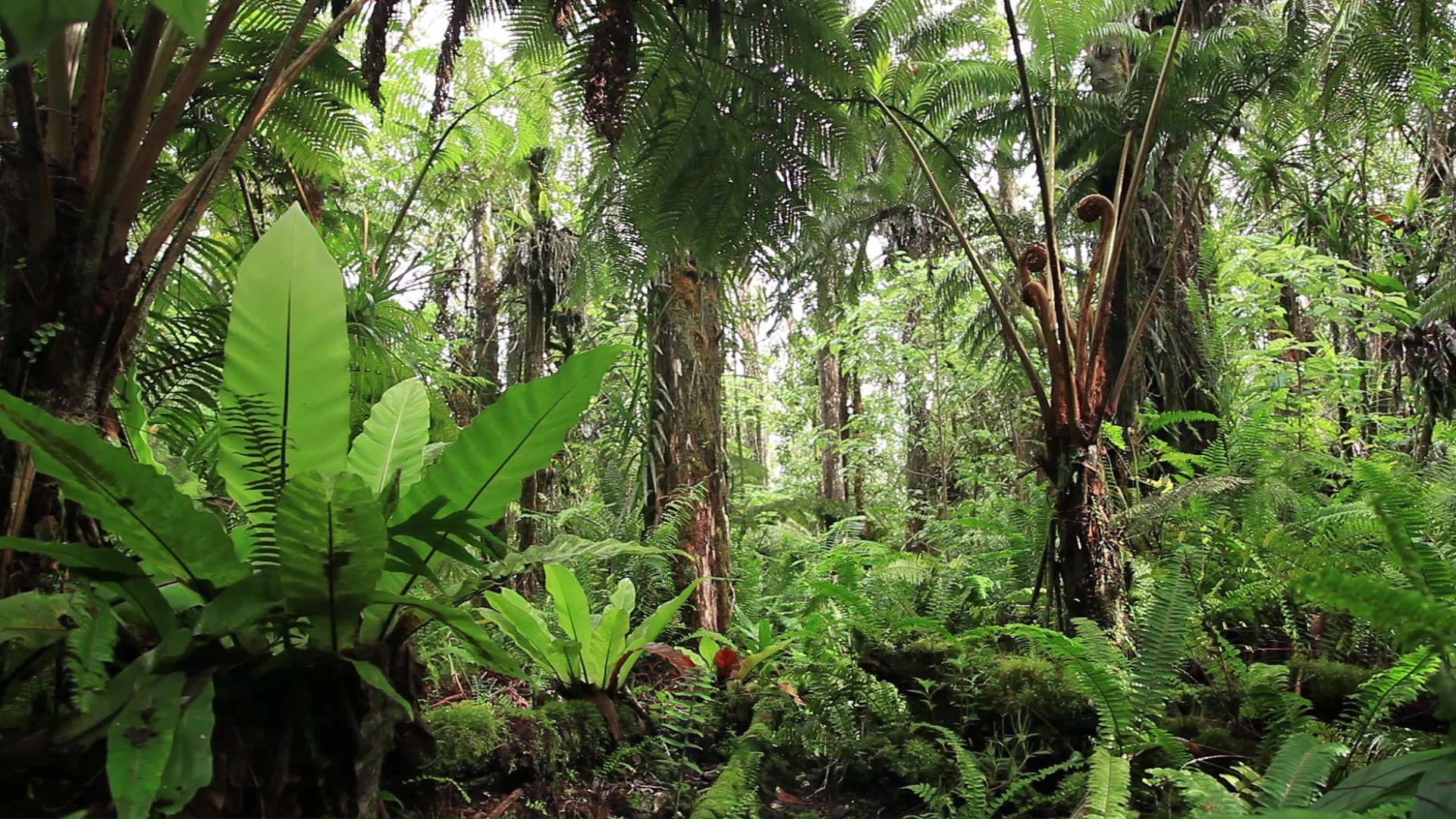
Invasive Species Control
Hawaiʻi’s native plants face constant pressure from invasive species and habitat loss. In a tropical environment, persistence is key: repeated management prevents invasive regrowth from reaching maturity, reducing the seed bank and giving native species the chance to recover and thrive.
HER’s year-round restoration program places invasive species control at the core of our efforts. Our methods range from hand-pulling and composting to targeted herbicide injections and selective foliar spraying in heavily infested areas. Materials are carefully managed—compost beds recycle organic matter, while larger woody stems are repurposed to enrich soils, create mulch, and even block pig access around new plantings.
Safe access is also essential. Trails are regularly maintained for restoration crews, volunteers, and educational groups, ensuring the forest remains both cared for and welcoming as a living classroom. In more degraded areas, HER adapts with a lower-intensity approach: using targeted spraying, edge control, and natural seed dispersal to slowly stabilize and shift the balance back toward native forest dominance.
Together, these strategies form a resilient, adaptive system that not only controls invasives but actively supports the long-term regeneration of Hawaiʻi’s rare lowland rainforests.
Before and after images of restoration efforts
Native Plant Propagation
Equally vital to restoration is the outplanting of native species to rebuild canopy cover and support a healthy forest understory. HER works closely with the Koaʻe Native Plant Nursery, now under our umbrella, which propagates native, rare, and endemic plants for use in Keauʻohana and other lowland restoration sites. The nursery, housed in a donated shade structure and carefully managed by Dr. Ann Kobsa, provides a steady supply of resilient seedlings that are essential for recovery (learn more on our Other Projects page).
In recent years, significant canopy loss has prompted us to diversify our planting palette, introducing additional native species—including some not originally present in Keauʻohana—to strengthen ecosystem resilience. This adaptive strategy prepares the forest for challenges such as climate change, invasive pests, and emerging pathogens. Many of these experimental plantings are now thriving, offering hopeful signs of a layered, biodiverse forest community taking root once again.
Community Outreach and Education
Community engagement is at the heart of Hawaiʻi Environmental Restoration (HER). Through seasonal volunteer events aligned with the Solstices and Equinoxes, school partnerships, and community workdays, we bring people into direct relationship with the Keauʻohana rainforest. Students from middle school to university level, local residents, and international visitors alike gain hands-on experience in native forest restoration, ecology, and conservation—while also learning the cultural and historical significance of Hawaiʻi’s native species.
Our outreach extends beyond the forest. HER participates in school visits, public talks, community fairs, and events such as Earth Day, Revitalize Puna, and the ʻŌhiʻa Love Fest. These efforts promote ecological literacy, encourage sustainable plant choices, and offer practical tools for climate resilience. To date, thousands of residents and visitors have engaged with our programs, deepening their understanding of kuleana (responsibility) and mālama ʻāina (caring for the land).
Each season builds on the last, strengthening both the forest and the community. Volunteerism serves as a pathway to stewardship, and every workday or presentation helps grow public awareness of Hawaiʻi’s fragile lowland ecosystems. In parallel, HER maintains an active online presence, reaching over 1,000 subscribers and larger audiences on Facebook and Instagram, where we share restoration updates, milestones, and educational content.
Together, these efforts create a regenerative cycle of learning and action—ensuring that the protection of Keauʻohana inspires care for Hawaiʻi’s native forests far beyond its borders.
Hawaiʻi Environmental Restoration (HER) has been restoring Keauʻohana State Forest Reserve since 2014 under the leadership of President and Project Director Jaya C. Dupuis, M.S., a tropical conservation biologist and environmental scientist with more than 35 years of experience in Hawaiʻi. Jaya’s journey began as a volunteer in the Keauʻohana and Halepuaʻa Reserves, later deepening through her master’s research at UH Hilo, where she studied vegetation patterns across 360 plots throughout Puna’s forest reserves. Her personal and academic dedication has since grown into a long-term, community-based restoration project devoted to protecting this rare lowland rainforest.
HER’s work reflects Jaya’s commitment to science-informed management and collaboration. She has partnered with lowland wet forest specialists in Hilo and beyond and actively serves as a member of the Lowland Wet Forest Working Group (LWFWG), a network of professionals from Puna and Hilo Districts working together to advance restoration outcomes across Hawaiʻi’s remaining lowland wet forests.

